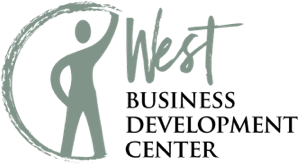Discover the Blue Economy in Mendocino County
With 96 miles of coastline the Mendocino coast is home to myriad types of ocean life. Generations have made their living from the sea and as this decade draws to a close our focus is on regenerative approaches to the ocean.
Learn about the Blue Economy
Blue Dot is a program that airs on North Coast Public Radio. It features interviews with guests from all over the regional, national, and worldwide scientific communities.
In this episode, aired on January 6, 2023, host Dave Schlom is joined by Kate Fishman from the Mendocino Voice, along with veteran journalist Frank Hartzell. They investigate the concept of the Blue Economy, using ocean resources in a more responsible, sustainable way as being practiced in the small coastal town of Fort Bragg, California.
Blue Economy Symposium Highlights, May 2022
The Noyo Ocean Collective works together to preserve and replenish
the beauty of our coastline and ocean life.
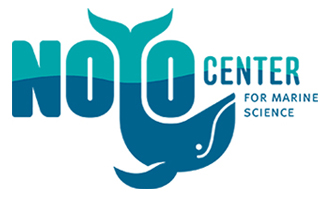
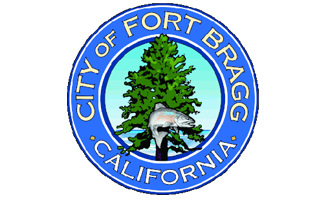

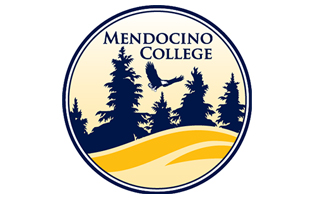
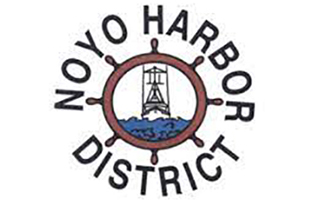
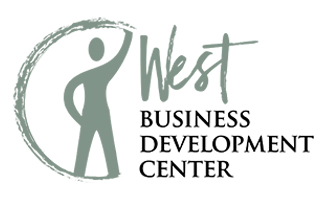
Request for Proposal: Noyo Ocean Science Center Blue Economy Feasibility Study
West Center, in collaboration with the Noyo Center for Marine Science is seeking to retain the services of a consultant or agency to prepare a Blue Economy Feasibility Study for the future development of Noyo’s Ocean Science Center
Introduction
West Center is supporting the expansion of the Blue Economy as a strategic program for Mendocino coastal and countywide economy. According to the World Bank, the blue economy is the “sustainable use of ocean resources for economic growth, improved livelihoods, and jobs while preserving the health of ocean ecosystem.” West Center’s work manifests in a number of ways – facilitating the ongoing work of the Noyo Ocean Collective, partnering with the Noyo Marine Science Center in developing its own sustainable business model, and generally serving as an information clearinghouse connecting Mendocino County stakeholders with one another, and local, state, and federal resources to support restorative ocean-facing economic development. The resources and links below are offered as a starting point for learning about this exciting arena of economic development. Feel free to reach out to West Center staff with specific questions on the blue economy and the resources provided here.
Definitions
According to the World Bank, the blue economy is the “sustainable use of ocean resources for economic growth, improved livelihoods, and jobs while preserving the health of ocean ecosystem.”
The European Commission defines it as “All economic activities related to oceans, seas and coasts. It covers a wide range of interlinked established and emerging sectors.”
The Commonwealth of Nations considers it “an emerging concept which encourages better stewardship of our ocean or ‘blue’ resources.”
Conservation International adds that “blue economy also includes economic benefits that may not be marketed, such as carbon storage, coastal protection, cultural values and biodiversity.”
Center for the Blue Economy: Blue Economy is now a widely used term around the world with three related but distinct meanings- the overall contribution of the oceans to economies, the need to address the environmental and ecological sustainability of the oceans, and the ocean economy as a growth opportunity for both developed and developing countries.
Resources
Local Resources
It’s said that a rising tide lifts all boats, and that’s a good way to think about the Blue Economy. In May, 2022 Fort Bragg hosted its first Blue Economy Symposium & Learning Festival, a two-day leadership forum and weekend full of fun, informative activities. Plans are already underway for next year.
The Blue Economy Symposium and Learning Festival is presented by Noyo Ocean Collective, a unique partnership uniting the City of Fort Bragg, Noyo Harbor District, Sherwood Valley Band of Pomo Indians, Mendocino College, West Business Development Center, and Noyo Center for Marine Science. Many thanks to California Sea Grant for their expertise, enthusiasm, and support over the past year to help make this happen.
- Watch the event speakers: https://visitfortbraggca.com/wrap-blue-economy/
- Noyo Ocean Collective
An informal coalition of local interests working on realizing blue economic development on the northern California coast. Current members include:
- Noyo Center for Marine Science
- Noyo Harbor District
- West Business Development Center
- Mendocino College, Coast Center
- City of Fort Bragg
- Mendocino County Economic Development
- Sherwood Band of Pomo Indians
- Noyo Harbor District
The Noyo Harbor Commission, consisting of five members, is the governing body of the Noyo Harbor District; a special public district and political subdivision of the State of California, organized under Section 6200 et seq. of the California Harbors and Navigation Code. The Commission has the ultimate authority of and directs all phases of operations of the Noyo Mooring Basin at Noyo Harbor; plans for the future use and development of Harbor District property and facilities; represents the Noyo Harbor District in contacts with federal, state, county, city and other public and private agencies; supervises the preparation of and adopts the annual budget. The Commissioners are not compensated for their service to the Harbor District. They meet regularly on the second Thursday of each month.
- Noyo Center for Marine Science
Mission: to advance ocean conservation through education, exploration and experience.
The Noyo Center has a three-pronged approach to development, supporting an innovative research program, creating an integrated education program and building a world-class facility for research, education and tourism. Their research and education programs support activities that engage the community, the visitor, and the scientist in order to inspire connection, communication, collaboration and creativity. Their future Noyo Headlands facility will be a dynamic environment that showcases sustainability through its landscape, buildings, and operations. This campus will unfold from the land with one element leading naturally to another as it grows and changes over time, transforming the former lumber mill site.
- City of Fort Bragg, Economic Development
The City of Fort Bragg serves as the primary commercial center for Mendocino County’s coastal communities. Historically, the local economy has been linked to lumber and fishing industries, and in recent decades has transitioned to rely heavily on tourism. Today, City Council is committed to developing a diverse and sustainable economy, supporting investment downtown, and facilitating relationships between businesses, and between business owners and lenders.
- Blue Economy at City of Fort Bragg
- City of Fort Bragg, Former Mill Site Economic Diversification Feasibility Study
- Mendocino College, Coast Center
Mendocino College Coast Center is the newest location to be added to the Mendocino Lake Community College District (CCD). Other Centers are located in Willits (North County Center) and Lakeport (Lake Center), with the main campus in Ukiah. The goal of all Centers is to provide classes, services, and access for students in remote parts of the Mendocino Lake CCD. To this end, the Coast Center offers fall, spring, and summer classes; admissions and registration assistance; academic counseling; financial aid; EOPS; CalWorks; and other support services.
The beautiful Coast Center campus provides a friendly and accessible atmosphere for new and returning college students. Faculty and staff offer continuing education and support services that lead to college degrees, certificates, improved job skills, transfers to other colleges and universities, and personal enrichment. For information and/or assistance, please call or stop by the Coast Center.
State Resources
California Sea Grant’s mission is to provide integrated research, extension, outreach, and education to help Californians balance diverse interests that intersect with the coastal and marine environments, and adapt to changing conditions and needs. We accomplish this by collaborating with a range of local, state, regional, national, and international partners to further the acquisition and application of relevant scientific knowledge.
The Commission is committed to protecting and enhancing California’s coast and ocean for present and future generations. It does so through careful planning and regulation of environmentally-sustainable development, rigorous use of science, strong public participation, education, and effective intergovernmental coordination.
The CDFW Aquaculture Program oversees California’s diverse aquaculture industry. Through policies and regulations, CDFW and the Fish and Game Commission balance the protection of natural resources and the development of sustainable commercial aquaculture.
Federal Resources
In January 2021, NOAA released its Blue Economy Strategic Plan for 2021-2025, laying out a roadmap for new ways to advance America’s Blue Economy and enhance the global ocean economy.
NOAA’s data, tools, and services that support coastal economies and their contribution to the national economy touch all aspects of American life. Approximately 127 million people, or 40% of the U.S. population, live in coastal counties. In 2018, the American blue economy supported 2.3 million jobs, and contributed approximately $373 billion to the nation’s gross domestic product.
- NOAA Office for Coastal Management; Report on The National Significance of California’s Ocean Economy
This report provides evidence of the inland significance of California’s marine transportation and ocean tourism sectors. The study begins with a discussion of California’s economy and the six economic sectors that depend on ocean resources, and then looks more closely at how two of these sectors—marine transportation and coastal tourism and recreation—support local economies across the country.
- EDA Good Jobs Challenge: Washington Maritime Blue
- EDA Commerce and the Blue Economy
Regional Partners
In 2015, the Port established the Aquaculture & Blue Technology Program, recognizing the growth opportunities of the Blue Economy sector and its strategic position within one of the world’s leading Blue Technology clusters. The program is conducting planning and predevelopment (see bottom of this page) work to support and inform aquaculture and blue technology opportunities in and around San Diego Bay.
In 2016, the Port established its Blue Economy Incubator to assist in the creation, development and scaling of new water-dependent business ventures on San Diego Bay focusing on sustainable aquaculture and Port-related blue technologies. The incubator acts as an innovation launch pad by providing early-stage companies with key assets and support services focused on pilot project facilitation including subject matter expertise, permit-ready infrastructure, entitlement assistance, marine spatial planning tools, market access, and funding.
To date, the Port has approved nine projects through its Blue Economy Incubator including shellfish nursery operations, copper remediation technology, a drive-in Boatwash, a smart marina application, a marine debris removal vessel, seaweed aquaculture, bio-enhancing shoreline armoring technology, and a new approach to soil remediation in marine environments.
The tidelands, bays, and estuaries of Humboldt County have unique and diverse management needs. The Humboldt Bay Harbor, Recreation and Conservation District was created in 1973 to address these needs. The District oversees planned development of the harbors and ports within the District, as well as protection of the natural resources located here. It is a countywide agency with permit jurisdiction over all tide, submerged and other lands granted to the District, including all of Humboldt Bay.
One of California’s most pristine estuarine environments, Humboldt Bay is the second-largest natural bay in the state. It presents a wide variety of unique habitats–such as open water, shallow water, mud and sand flats, salt marshes and ponds, agricultural lands, sand beaches, islands, and woody riparian vegetation. The Bay is home to approximately half of California’s eelgrass population, as well as 35 managed species of fish. In total, the Bay supports 120 species of fish, 251 species of marine birds, 550 species of marine invertebrates, 80 species of algae, and numerous resident and visiting marine mammals.
District operations focus on three primary areas: commercial use , recreational use , and conservation . These operations are managed by a staff of employees and are governed by an elected board of commissioners .
Non-Governmental Organizations
Related Programs
Ways to Get Involved
Our oceans need your help. There are many ways to become part of the solution in your community.
- Volunteer at the Noyo Center for Marine Science
- Read about the Noyo Harbor District Community Sustainability Plan
- Take a marine biology course at Mendocino College
- Donate to support new marine business development
